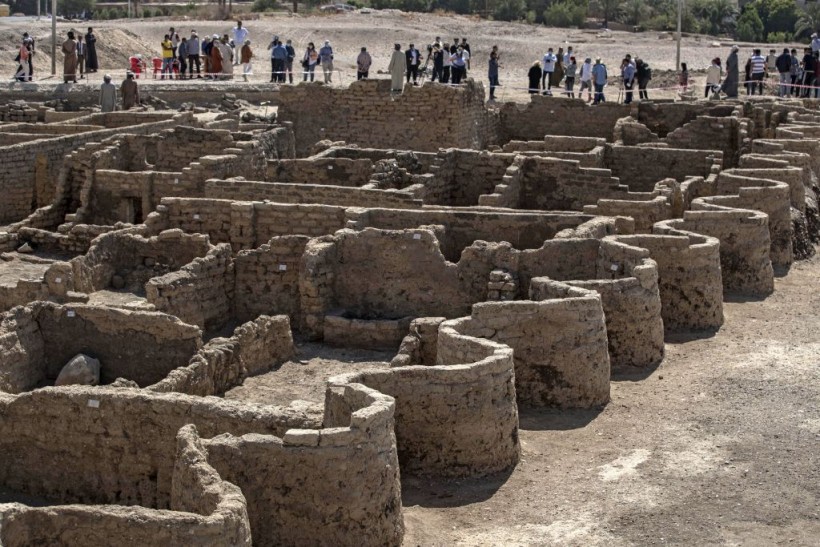
(Photo : KHALED DESOUKI/AFP via Getty Images)
These finds represent some of the most significant archeological discoveries in 2021 that were found. Humankind's knowledge of his past is incomplete.
To date, the overall idea of how old or how far human civilization has existed in prehistory to the historical time is incomplete, but these discoveries give an idea where to start, according to Live Science.
Immense Indian geoglyph
This could be one of the biggest geoglyphs globally, located in India Thar Dessert with a sheer size of 20.8 hectares, close to the Pakistan Border. It is a pattern of spirals and lines undulating back and forth, but best seen from the air, which is similar to the ground pattern in Nazca, Peru. These lines are about 150 years old too.
Babylonian Ghost Spell (Ghost Drawing)
Engraved on a 3,500-year-old tablet from ancient Babylon is their version of a ghost. The image of the ghost is a bearded man looking grumpy, with a woman pulling him with a rope to the underworld.
On the tablets is an exorcism spell that calls on Shamash, the sun god, to pull the soul to the land of the dead. The rite says not to look behind; the ghost was seen only recently.
Oldest European map
Dated to 4000-years ago, the engraved pattern on stone slabs found in France is the oldest map of Europe. Lines are supposed to be the Odet River and a valley in western France, which is 30 kilometers by 21 km, discovered in 1900 that showed the territory of a King.
Tell Banat Syria (Burial Mound)
Scientists said a 4,300-year-old mound called Tell Banat is a very ancient war memorial. There are at least 30 dead bodies with equids and pellets, which is one of the archeological discoveries of 2021. Scholars indicate the equids were placed with the dead soldiers and pellets. These were burial mounds that piled the bodies of the dead, cited Art News.
2,000-year-old Pet Cemetery
An archeologist discovered one of the oldest pet burials in Berenice port on Egypt's Red Sea coast. The ancient pets were buried with care by their long-dead owners. These sites in Egypt have similar animal graves where they were sacrificed.
The first evidence of Crucifixion in the UK
Its discovery in Cambridgeshire, where UK archeologists found the remains of a man about 25 to 35, with a nail driven into his heel bone. They say his hands would have been tied to a cross, and later he would be suffocated till death. It either the man was a slave explaining the crucifixion.
An ancient 1,500-year-old couple in China
In ancient China, a man and woman were together in the grave when found. The remains were perfectly preserved and the embrace as well.
According to lead researcher Qian Wang, this is the first instance of such burial in China. The man and woman were in the 29 to 45 age range when they died, but the woman could have committed suicide to be with the man.
Karahantepe Turkey
An 11,000-year-old site was a prehistoric parade where people marched through phallus pillars and a huge human head. It was there in the time of Gobekli Tepe, and these are the two oldest ruins in the world so far, noted the Daily Sabah.
Dragon Man
A new human called Homo long or Dragon man has an elongated skull found in 1933 but hidden until rediscovered 85 years later.
Amenhotep's Lost Golden City
Found near Luxor in Ancient Egypt when the pharaoh Amenhotep III was in power from 1391 and 1353 B.C. The royal complex housed buildings of all kinds and three royal palaces in the city at the height of his power.
These archeological discoveries in 2021 are only the tip; there will be more ancient secrets to unravel.
Related Article: A Mound Shaped Like a Pyramid With 30 Bodies Can Be One of the Oldest War Memorials From Ancient Syria








